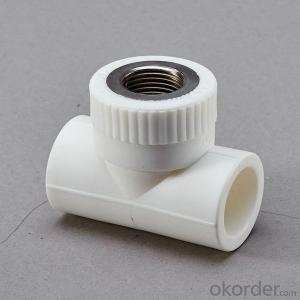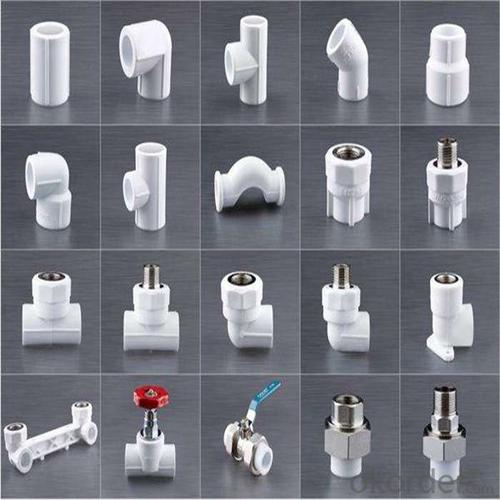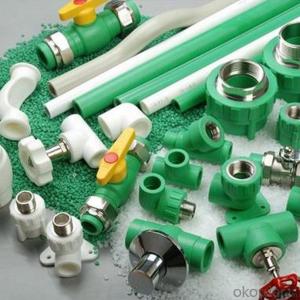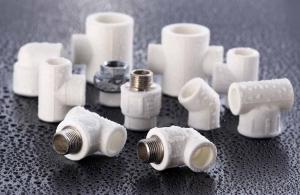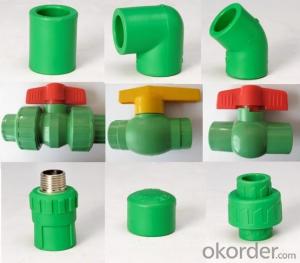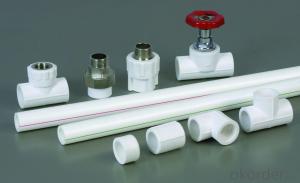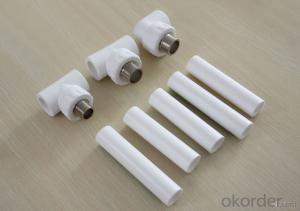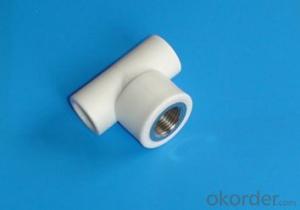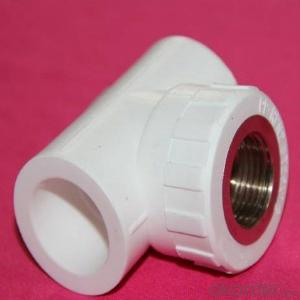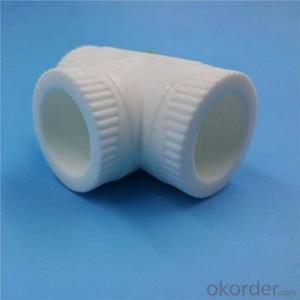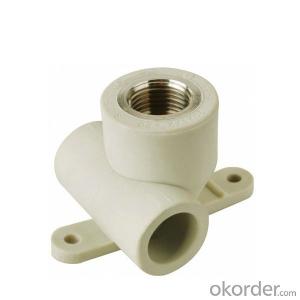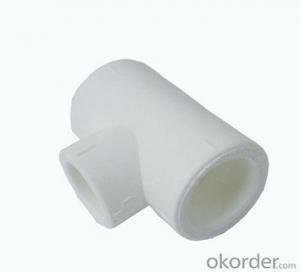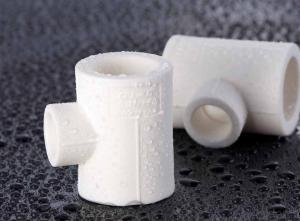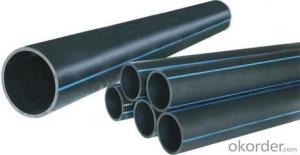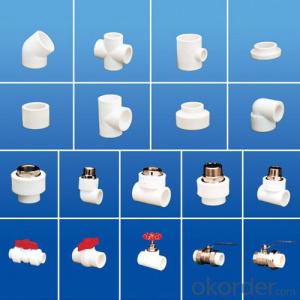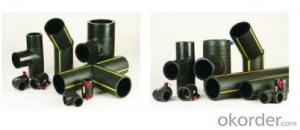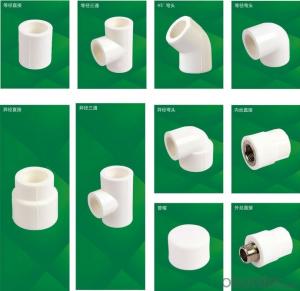Spears Plastic Pipe Fittings 2024 PPR Pipe Three Tee Fitting for Landscape Irrigation
- Loading Port:
- Tianjin
- Payment Terms:
- TT OR LC
- Min Order Qty:
- 1000 pc
- Supply Capability:
- 100000 pc/month
OKorder Service Pledge
OKorder Financial Service
You Might Also Like
Product Overview
Standard: ISO
Color: many colors
Product name: Plastic Pipe
Application: house and garden
Usage: Family Decoration Industry
Certification: ISO Certificate
Feature: Lightweight
Size: Customized Size
Type: Round Pipe
Name: HDPE Plastic Pipe
Advantanges
1, High Temperature Resistance: the maximum sustained working temperature is up to 70 Degrees Celsius, the maximum transient temperature is up to 95 Degrees Celsius.
2, Heat insulation and Saving Energy: low thermal conductivity which is only 1/1500 of brass pipe, and 1/250 of steel pipe.
Non-toxic: no heavy metal additives would not be covered with dirty or contaminated by bacterium.
3, Corrosion Resistant: resist chemical matters or electron chemical corrosion.
4, Lower Installation Costs: light weight and good hot-melt performance can reduce installation costs by as much as 50% over metal piping system.
5, Higher Flow Capacity: smooth interior walls result in lower pressure loss and higher volume than metal pipes.
6, Long Life: more than 50 years under normal conditions.
7, Recycled and Environment-friendly.
Product Description
Product name | Size | Weight | Pack |
Equal tee | (Gram/m) | (m/pack) | |
T16 | 12.5 | 1300 | |
T20 | 19.4 | 800 | |
T25 | 30.5 | 450 | |
T32 | 48.2 | 260 | |
T40 | 90.8 | 150 | |
T50 | 142.5 | 106 | |
T63 | 275.3 | 54 | |
T75 | 515.0 | 30 | |
T90 | 712.0 | 18 | |
T110 | 1082.0 | 12 | |
T125 | 1544.0 | 8 | |
T160 | 2531.0 | 4 |
Product Show
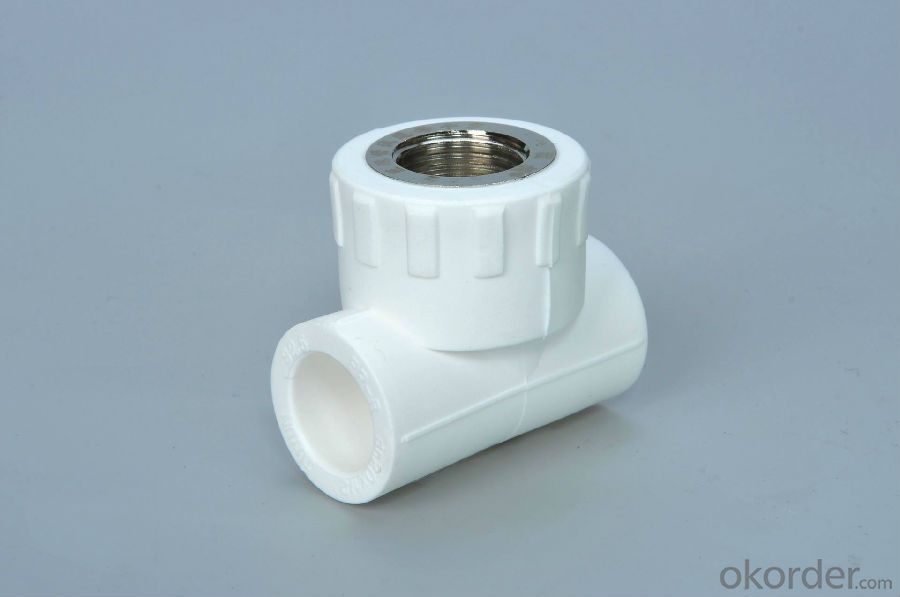
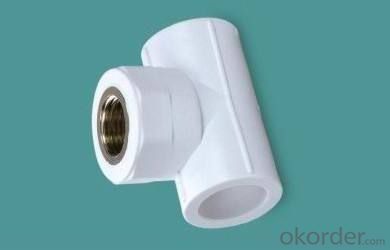
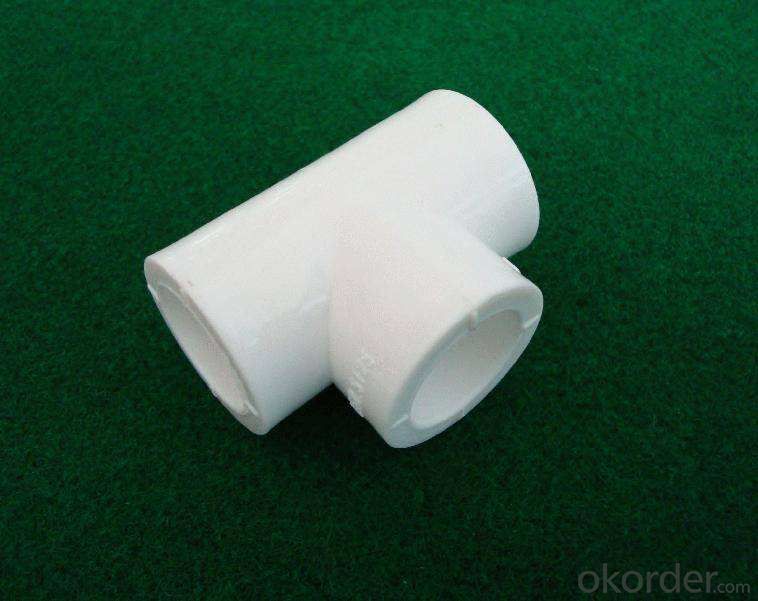
FAQ
Q1: How Can I Get A Sample?
A1: You can get samples by communicate with our export sales.
Q2: How Long Is Delivery?
A2: Delivery time will be30-45days according to order quantity.
Q3: What Is The MOQ?
A3: MOQ depends on different items.
Q4: What Is Our Normal Payments Terms?
A4: Our normal payment terms now is: T/T, L/C or western union, pay
- Q: Can plastic pipe fittings be used for HVAC systems?
- Yes, plastic pipe fittings can be used for HVAC systems. Plastic fittings, such as PVC or CPVC, are often used in HVAC applications due to their corrosion resistance, durability, and ease of installation. However, it is important to ensure that the plastic materials and fittings used are compatible with the specific HVAC system and meet the necessary codes and standards.
- Q: What causes plastic pipes and fittings to burst easily?
- Pipe is widely used. Pipes are used in many industries.Different industries have different characteristics of the industry, and thus have different technical requirements.Pipe is a relatively mature product, each industry has the corresponding technical standards.Detect pipe material, according to the application of pipe industry, select the corresponding product standards, according to the industry needs to detect the corresponding technical indicators.
- Q: What types of plastic are commonly used for pipe fittings?
- Some common types of plastic used for pipe fittings include PVC (polyvinyl chloride), CPVC (chlorinated polyvinyl chloride), and PEX (cross-linked polyethylene).
- Q: Can plastic pipe fittings be used for swimming pool plumbing?
- Yes, plastic pipe fittings can be used for swimming pool plumbing. They are commonly used due to their durability, resistance to chemicals and corrosion, and ease of installation.
- Q: Can plastic pipe fittings be used for stormwater infiltration systems?
- Yes, plastic pipe fittings can be used for stormwater infiltration systems. These fittings are typically made from durable and corrosion-resistant materials such as PVC or HDPE, which are well-suited for underground applications. Plastic pipe fittings offer the advantage of being lightweight, easy to install, and resistant to chemical reactions commonly found in stormwater. Additionally, their smooth interior surfaces minimize friction and allow for efficient water flow in infiltration systems.
- Q: Can plastic pipe fittings be used for stormwater management?
- Yes, plastic pipe fittings can be used for stormwater management. Plastic pipe fittings are commonly used in stormwater management systems due to their durability, resistance to corrosion, and ease of installation. They are also cost-effective and can effectively handle the flow of stormwater in various applications such as drainage systems, culverts, and retention ponds.
- Q: Are plastic pipe fittings resistant to seismic activity?
- Yes, plastic pipe fittings are generally resistant to seismic activity. These fittings are designed to flex and absorb vibration, making them less prone to damage during earthquakes or other seismic events. Additionally, the lightweight nature of plastic materials reduces the risk of structural failure compared to heavier alternatives like metal fittings. However, it is important to ensure proper installation and use fittings that comply with seismic codes and regulations to maximize their resistance to seismic activity.
- Q: Can plastic pipe fittings be used for cooling water systems?
- Yes, plastic pipe fittings can be used for cooling water systems. Plastic fittings are commonly used in various plumbing applications, including cooling water systems. They are lightweight, resistant to corrosion, and easily installable, making them a suitable choice for these systems. However, it is essential to ensure that the plastic fittings are compatible with the specific temperature and pressure requirements of the cooling water system.
- Q: What is the plastic pipe joint of water supply pipe?
- This depends on what kind of plastic you use, for example, you want PPR that connector is PPR pipe fittings
- Q: Can plastic pipe fittings be used in fish tank systems?
- Yes, plastic pipe fittings can be used in fish tank systems. They are commonly used for plumbing and water flow management in aquariums due to their durability, corrosion resistance, and affordability. However, it is important to choose fittings that are specifically designed for use in aquatic environments to ensure they are non-toxic and safe for the fish and other aquatic life.
Send your message to us
Spears Plastic Pipe Fittings 2024 PPR Pipe Three Tee Fitting for Landscape Irrigation
- Loading Port:
- Tianjin
- Payment Terms:
- TT OR LC
- Min Order Qty:
- 1000 pc
- Supply Capability:
- 100000 pc/month
OKorder Service Pledge
OKorder Financial Service
Similar products
Hot products
Hot Searches
Related keywords

